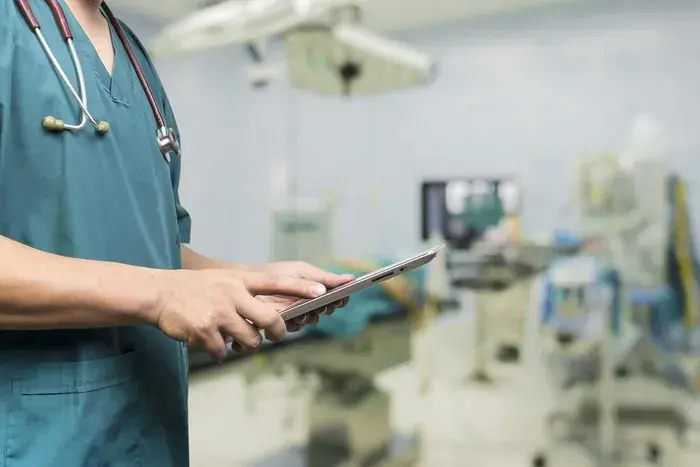
Standardizing ER Protocols and Procedures: Consistency in Crisis
In the high-stakes environment of an emergency room (ER), where split-second decisions can mean the difference between life and death, consistency is essential. Standardizing ER protocols and procedures ensures that every patient receives the same high-quality care, regardless of who is on duty or the time of day.
What role do unified protocols play in these crisis environments and how can you make sure they're being followed? Below, we'll explore why standardized ER protocols matter and take a look at how C8 Health's digital knowledge management platform can help you standardize protocols and increase consistency in care for emergency situations.
Meet the Expert
Ido Zamberg M.D. is a board-certified physician (General Internal Medicine and Anesthesia), currently a Fellow at the Division of Experimental Medicine, McGill University Health Center, Montreal, Canada.
The Role of Standardized Protocols in the ER
Protocols are established guidelines that dictate procedures in an emergency room. These predefined procedures can be initiated by healthcare professionals without waiting for additional instructions.
Implemented through specialized service lines, protocols guide specific areas like acute stroke management, heart attacks, surgical emergencies and more. They establish clear indications, contraindications, and treatment plans.
These ER protocols serve several important functions:
- They allow for the immediate commencement of patient evaluation and care.
- They increase care consistency, reducing unwarranted variation and improving workflow.
- They expedite treatment for conditions where time is of the essence.
- They enhance patient safety and comfort.
- They reduce the overall time patients spend in the ER by initiating testing and treatment earlier.
For instance, a protocol for treating a patient with chest pain in the ER might require an immediate electrocardiogram (ECG) to check for signs of a heart attack. If the ECG shows abnormalities, the protocol would help guide clinicians with the next steps in the treatment plan.
By following this protocol, healthcare professionals ensure that every patient with chest pain in the ER receives the same high-quality care.
In essence, ER protocols are integral to healthcare quality, playing a crucial role in risk management, minimizing errors, and enhancing patient safety.
» Streamline your institution's process with this easy-to-use solution.
Why Standardization In Crisis is Important
Standardization Eliminates Variability
Medical professionals are human, and humans are prone to variability. Two doctors with the same training might approach a problem differently. While this can sometimes lead to innovative solutions, it can also lead to inconsistencies in patient care.
Standardizing protocols and procedures helps to eliminate this unwarranted variability. It ensures that all patients receive the same level of care, regardless of which healthcare professional they interact with. This is particularly important in emergencies, where there is often no time for second opinions or lengthy discussions.
Standardization Reduces Medical Errors
Another reason for implementing protocols is to increase the consistency of care and lower the chance of errors creeping in.
In my work as an anesthesiologist, in drug preparation and administration, having clear protocols detailing drug location, appearance, labeling, contraindications, and indications significantly reduces the risk of errors.
» Seeking solutions for risk management? Find out how to reduce medical errors in healthcare.
Challenges in Implementing Standardized Protocols
While the benefits of standardized protocols are clear, implementing them can be challenging. Each hospital or health institution has unique circumstances, including the available staff, resources, and local processes. Adapting international guidelines to fit these circumstances can be a time-consuming process.
Another significant challenge is that hospitals often have a number of local protocols but lack proper knowledge management systems. So disseminating a protocol to all relevant people can be another challenge once a protocol has been developed. This can involve training hundreds or thousands of staff members in large hospitals or health institutions.
How to Implement Standardized ER Protocols and Procedures
ER protocols and procedures can be effectively managed through a unified knowledge management system. This system serves as a reliable source of information, ensuring all healthcare professionals have access to the same, current information.
The C8 Health platform was developed to ensure consistency in care, centralizing knowledge, breaking knowledge silos, disseminating information using push notifications, and eliminating duplicate versions. This approach has led to increased adherence to best practices, wider adoption of these practices, and more efficient implementation of changes in these best practices at the point of service.
By breaking down the silos of information and providing a unified platform for knowledge sharing, we are helping healthcare institutions deliver better, more consistent care to their patients.
Consistency in Critical Care: ER Protocols and Procedures
Standardizing ER protocols ensures that all patients receive the same high-quality care and that there is effective collaboration among concerned healthcare givers. With this in place, we can help to reduce variability and improve the overall quality of care.
While there are challenges in implementing standardized protocols, using a centralized knowledge management system, like C8Health, can help overcome these challenges and ensure that all healthcare professionals can access the most up-to-date information.


